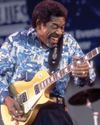
Francisco de Asís Tárrega y Eixea, or ‘Quiquet’ (Frank) as his friends called him, was born November 21st, 1852, and had a somewhat complicated start in life after a traumatic incident as an infant left him partially blind. One version of this backstory published by his pupil, one Emilio Pujol, is he was thrown into a river and left for dead by his nursemaid. He was ultimately saved by neighbours but the trauma left him with lifelong eye damage that he required surgery for, for the rest of his life.
Owing to this medical implication Tarrega’s journey into music started out with him learning piano and guitar exclusively with music tutors who were themselves blind. Tárrega quickly excelled at both, though his prodigious talent for guitar made him fall in love with the instrument to the point where he ran away from home as a teenager to be a travelling guitarist. His father subsequently found him and brought him home where he settled back into his music studies. As a young man Tárrega accepted a place at the Madrid Royal Conservatory to study guitar and piano. The guitar at the time was not yet established as a serious concert instrument so, like many other great players throughout the 19th and 20th century, it was necessary for them to learn a more ‘mainstream’ instrument so as to get their foot in the door. Tárrega’s situation was possibly Tárrega’s situation was possibly helped by the fact he commenced his studies on a superior instrument by the Spanish luthier Antonio de Torres; a luthier we all know well today (whether we realise it or not) as his 1812 Spanish guitar model became the standard Classical concert guitar design globally adopted by luthiers.
Diese Geschichte stammt aus der February 2022-Ausgabe von Guitar Techniques.
Starten Sie Ihre 7-tägige kostenlose Testversion von Magzter GOLD, um auf Tausende kuratierte Premium-Storys sowie über 8.000 Zeitschriften und Zeitungen zuzugreifen.
Bereits Abonnent ? Anmelden
Diese Geschichte stammt aus der February 2022-Ausgabe von Guitar Techniques.
Starten Sie Ihre 7-tägige kostenlose Testversion von Magzter GOLD, um auf Tausende kuratierte Premium-Storys sowie über 8.000 Zeitschriften und Zeitungen zuzugreifen.
Bereits Abonnent? Anmelden

THE MOODY BLUES
This month Stuart Ryan delves into the picking style of this British prog legend whose acoustic guitar has powered many a Moody Blues song.

WAYNE KRANTZ
This issue Nick Mellor provides an insight into this brilliant jazz stylist, focusing on his approach to improvising over static chords.

OPEN G TUNING
Open tunings are great fun and can help create exciting new ideas. Simon Barnard shows how to incorporate open G tuning into your playing.

RODRIGO GOUVEIA
Last month we featured Mateus Asato, and mentioned the importance of the neo-soul style in his playing. Here we turn to his fellow Brazilian, the master of neo-soul fusion.

MARK KNOPFLER
Our topic this month is a master craftsman as both guitar player and songwriter. His style is unique and his influence spreads far and wide.

U2
Martin Cooper checks out the chiming pedal delay tones of this stadium-filling band from Dublin, Ireland, and guitarist The Edge.

LUTHER ALLISON
It’s blues with a touch of soul this month, as David Gerrish explores the dynamic, expressive style of an often overlooked Chicago bluesman.

JOHANN KASPAR MERTZ Capriccio
This month Declan Zapala explores the music of Austria at the turn of the Romantic period with a fiery caprice to level up your fingers and unlock your inner virtuoso.

THE CROSSROADS Michael Landau
John Wheatcroft explores the playing of a session ace _ and blazing blues-rock maestro who graces the top-flight m band of singer-songwriting legend, James Taylor.

VIDEO MASTERCLASS Troy Redfern
This month GT welcomes this slide guitar virtuoso. If you've been wanting to take your slide playing to the next level then this is one's for you. With Jon Bishop.